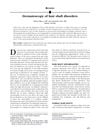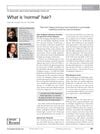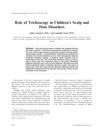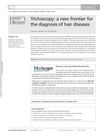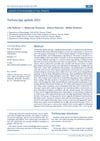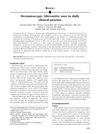Trichoscopy
August 2008
in “
Archives of Dermatology
”
trichoscopy videodermoscopy monilethrix Netherton syndrome pili annulati androgenic alopecia diffuse alopecia areata hair shaft abnormalities hair thickness hair density terminal hairs vellus hairs follicular features fibrotic follicles hyperkeratotic plugs cadaverized hairs scalp skin color scalp skin structure
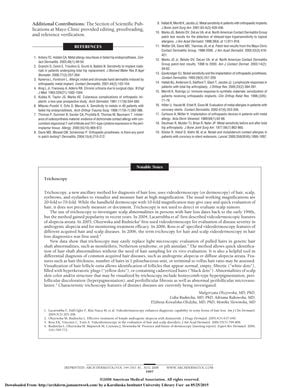
TLDR Trichoscopy is a non-invasive way to diagnose hair and scalp problems without needing hair samples.
Trichoscopy, introduced in the early 1990s and gaining popularity in the 2000s, is a non-invasive diagnostic tool for hair and scalp disorders that utilizes videodermoscopy to visualize hair, scalp, eyebrows, and eyelashes at high magnifications ranging from 20-fold to 70-fold. This technique allows for the assessment of hair shaft abnormalities, such as monilethrix, Netherton syndrome, or pili annulati, without the need for hair sampling. It is also useful in the differential diagnosis of common hair diseases like androgenic alopecia or diffuse alopecia areata by evaluating features such as hair thickness, hair density, and the ratio of terminal to vellus hairs. Trichoscopy can identify follicular features, including normal, empty, or fibrotic follicles, as well as hyperkeratotic plugs and cadaverized hairs, and can visualize abnormalities in scalp skin color and structure. The document suggests that trichoscopy may replace light microscopic evaluation of pulled hairs and is becoming an essential tool in the diagnosis and monitoring of hair loss conditions.

